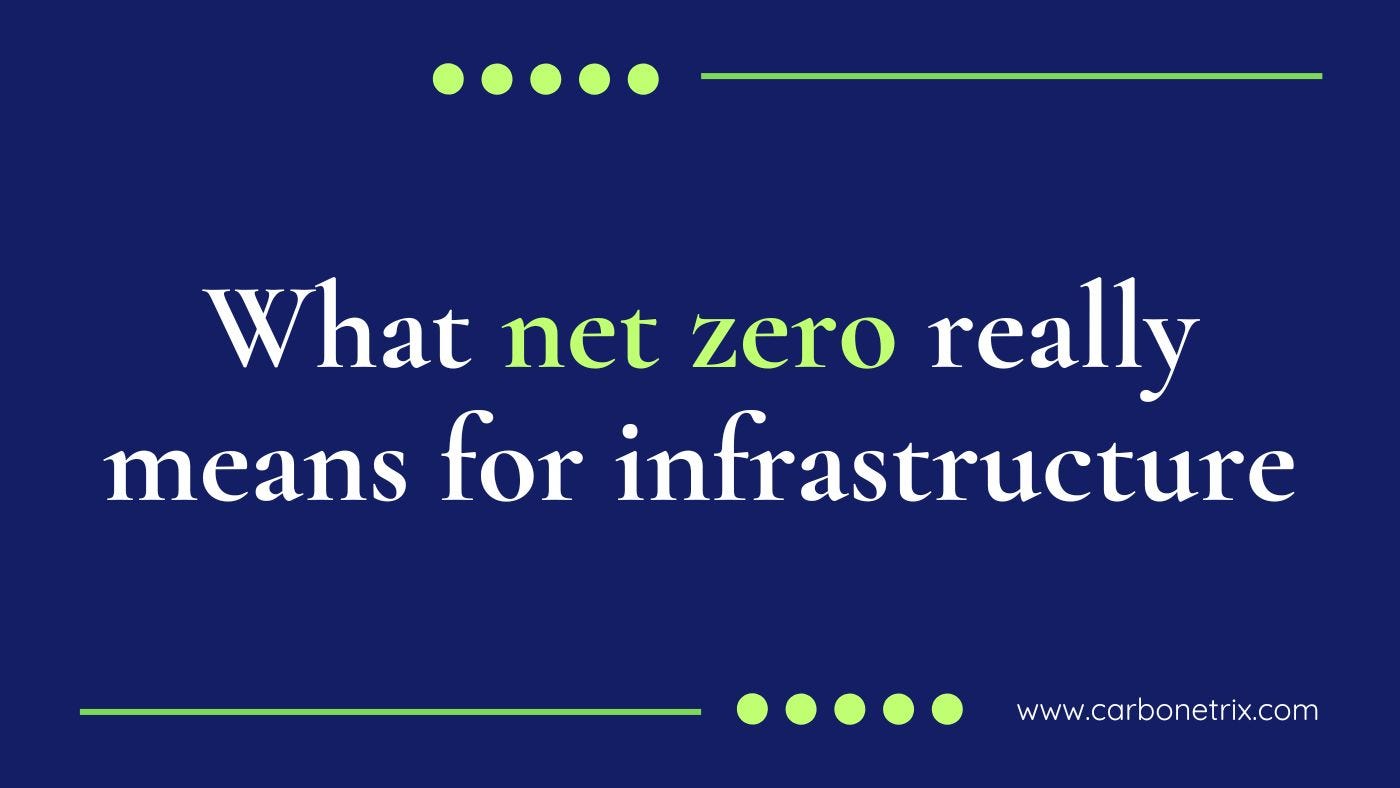Ever notice how many people these days claim they are “on the road to net zero”?
Well, most teams are using net zero to mean wildly different things from buying a few tree-planting offsets to slapping PV panels on a new bypass. The confusion muddies investor confidence, triggers public scepticism, and leaves genuine decarbonisation work under-funded.
So today we are going to untangle the buzzword. You will learn:
The precise conditions that must be met before a project can call itself net zero.
The convenient shortcuts that do not count, and why they risk costly reputational blow-ups.
A pragmatic checklist to keep your asset plan honest, bankable, and future-proof.
By the end you will know exactly where your current strategy stands and what needs upgrading first.
Net zero starts with absolute cuts, not offsets
Offsets are like sticking a plaster on a leaking pipe. They hide the mess but never fix the break. Credible net-zero strategies begin by driving absolute emissions down to the lowest technically feasible level, measured across Scope 1, 2, and upstream Scope 3. Offsets are allowed only for the tiny residual that cannot be engineered out. Treat them as a last 5% mop-up, not a primary tactic.
Whole-life emissions matter more than annual snapshots
A shiny new station that consumes little energy in operation may still fail the test if its concrete and steel footprint eclipses thirty years of running emissions. Always model production + construction + operation + end-of-life together. Use a baseline year and a whole-life carbon budget. Then, hold designers accountable for staying within it.
Supply chains carry most of the load
In the UK construction sector, embodied carbon accounts for approximately 20% of the built environment's emissions, yet most of this sits several tiers down the procurement ladder in materials processing and component manufacture. Insert carbon clauses into contracts, ask for Environmental Product Declarations, and favour suppliers with science-based targets, particularly important since PPN 06/21 requires firms bidding for government contracts worth £5 million or more to publish Carbon Reduction Plans. Remember: your net-zero badge is only as strong as your weakest subcontractor.
Carbon removal is the back-stop, not the plan
Focus first on proven levers: efficiency, electrification, low-carbon materials, modal shift. The UK's infrastructure plan will soon require full carbon tracking, meaning bids that ignore carbon costs will be rejected..
Targets without credible pathways are greenwash
Proactive embodied carbon management reduces project costs by 10-15%. In contrast, reactive approaches incur premium costs for emergency compliance measures. Insist on three essentials before announcing net zero: (1) a quantified baseline, (2) transparent interim milestones, and (3) a funded implementation plan. No pathway, no press release."
Temporary reductions do not equal net zero
Slashing site diesel use during construction is great. But if your finished tunnel locks commuters into high-carbon travel for decades, your ledger ends up red. Test every design decision against a simple rule: will this asset still align with a 1.5 °C world in 2040? If not, rethink it now while concrete is still on paper.
Infrastructure can lead by integrating circular design
Reusing structural steel, designing bridges for de-construction, specifying ultra-low-clinker cements: these moves cut carbon twice, today and at end-of-life. Start a “materials passport” database so future owners know exactly what can be salvaged. Circularity is not a fashion statement; it is the insurance policy that keeps your asset compliant with tightening climate rules.
Your quick-action checklist
Baseline: Measure Scope 1-3 whole-life emissions before concept freeze.
Hierarchy: Apply this order: reduce, substitute, recover, then offset.
Contracts: Embed carbon performance targets and data reporting across every tier.
Milestones: Publish credible interim reductions, audited annually.
Governance: Tie executive bonuses to progress; carbon savings should hurt or reward the bottom line.
Pick one item and lock it into your next design review. Momentum follows the first decisive step.
Keep building smarter, cutting deeper, and never settle for vague promises.
Dr. Suhaib Arogundade, Ph.D.
PS: If you wait for embodied carbon regulations to hit, it’ll be too late. Here’s how you can get ahead of the curve.


